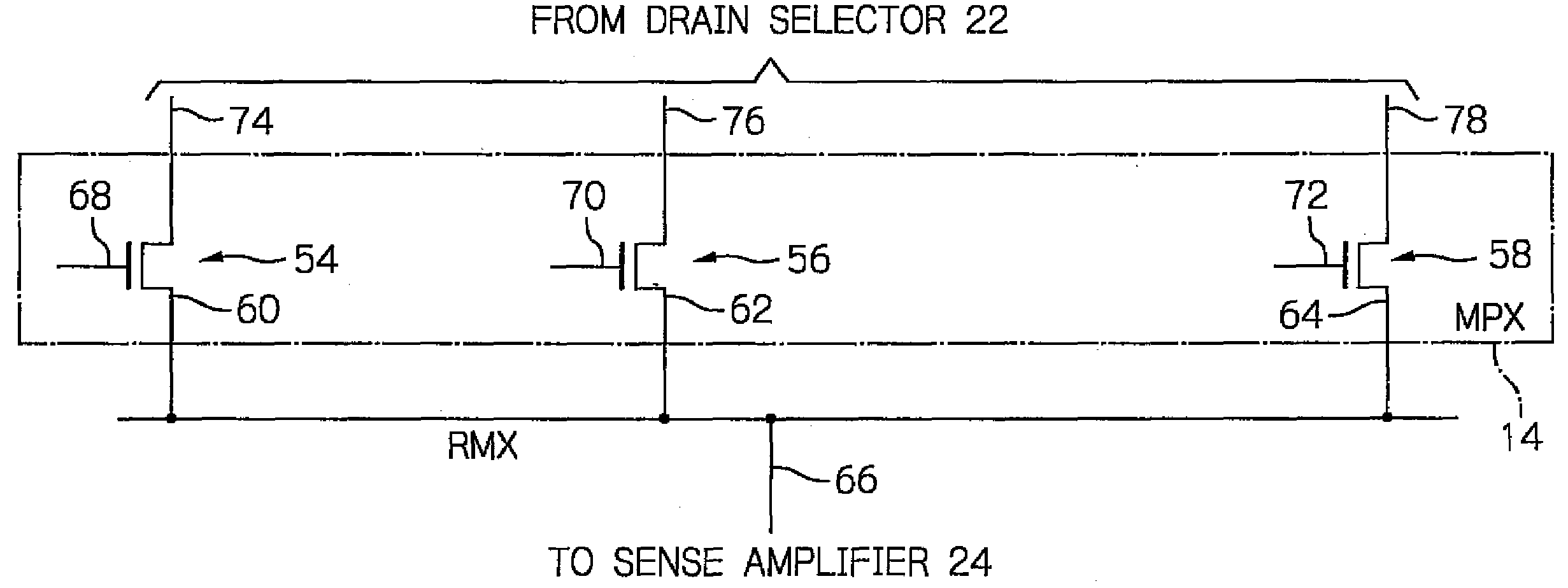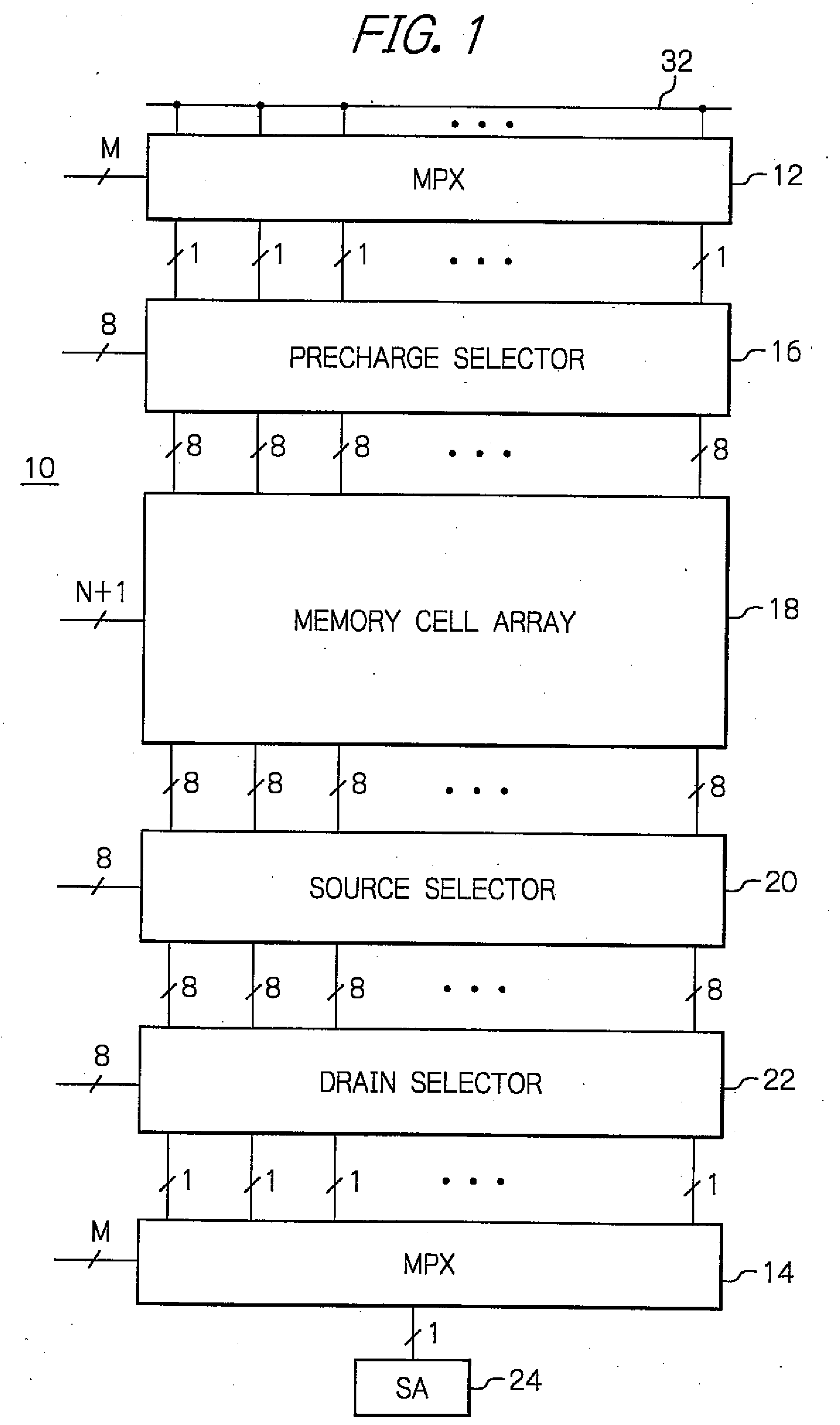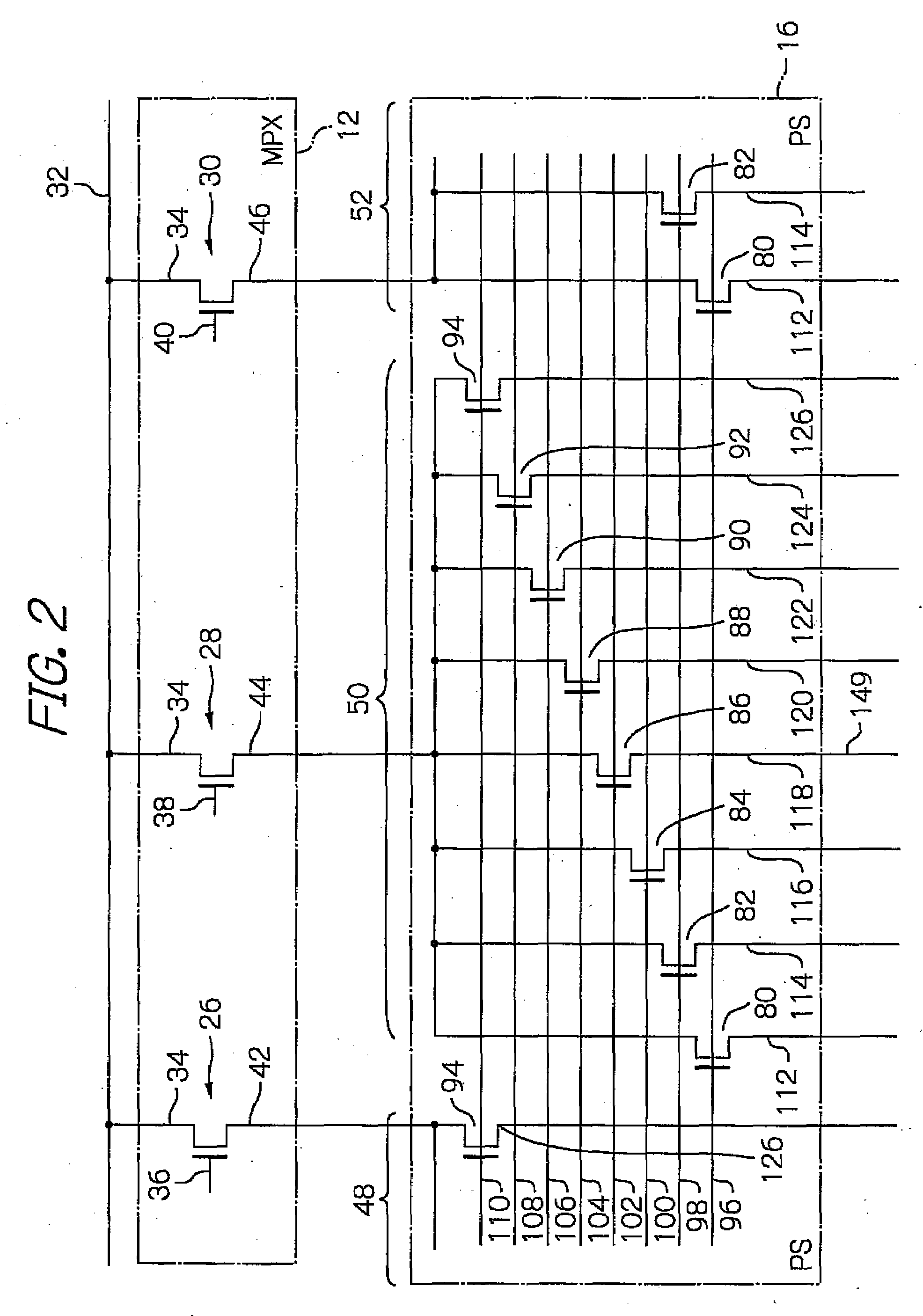Semiconductor memory device having high stability and quality of readout operation
a memory device and memory technology, applied in the field of semiconductor memory devices, can solve the problems of deteriorating access time, access margin, and pn-junction potential gradient being particularly steep, and applying this method cannot completely negate the influence of interferential current, so as to achieve fast and stable operation, eliminate interference current, and eliminate interference current
- Summary
- Abstract
- Description
- Claims
- Application Information
AI Technical Summary
Benefits of technology
Problems solved by technology
Method used
Image
Examples
Embodiment Construction
[0051]Well, reference will be made to accompanying drawings to describe a semiconductor memory device in accordance with preferred embodiments of the present invention. With reference first to FIG. 1, in a semiconductor memory device 10 in accordance with a preferred embodiment, a sense amplifier 24 is adapted to detect either a voltage level on or a current flowing over a column line; and, when reading out a stored content, or data, in a multi-valued memory cell of the memory cell device 10, a multiplexer (MPX) 14 selects a sub-block including one of the memory cells, which has data to be read out stored, in a row, a drain selector (DS) 22 selects a first column line connected to one terminal of the memory cell having the data to be read out, a precharge selector 16 selects a second column line connected to the other terminal of one of the memory cells which adjacent to the one terminal of the memory cell having the data to be read out, another multiplexer 12 selects a sub-block in...
PUM
 Login to View More
Login to View More Abstract
Description
Claims
Application Information
 Login to View More
Login to View More - R&D
- Intellectual Property
- Life Sciences
- Materials
- Tech Scout
- Unparalleled Data Quality
- Higher Quality Content
- 60% Fewer Hallucinations
Browse by: Latest US Patents, China's latest patents, Technical Efficacy Thesaurus, Application Domain, Technology Topic, Popular Technical Reports.
© 2025 PatSnap. All rights reserved.Legal|Privacy policy|Modern Slavery Act Transparency Statement|Sitemap|About US| Contact US: help@patsnap.com



